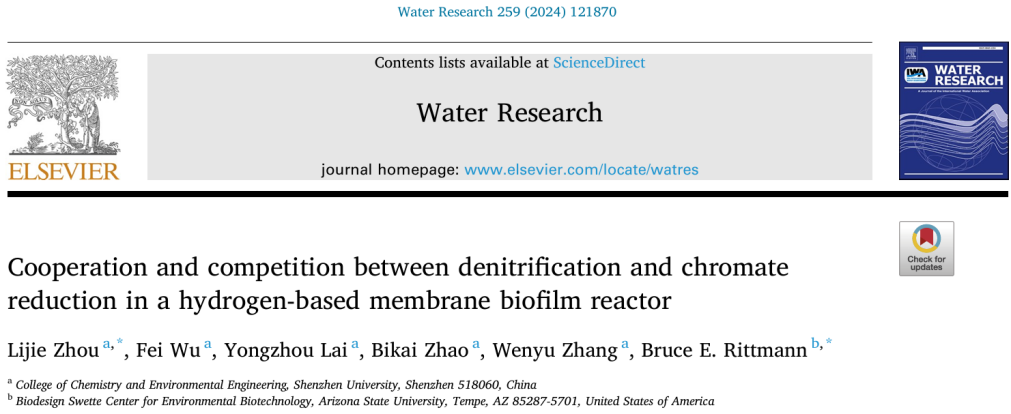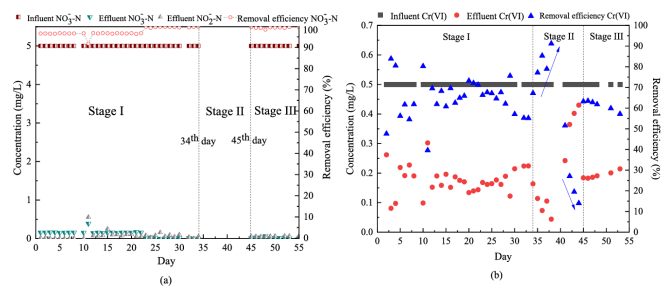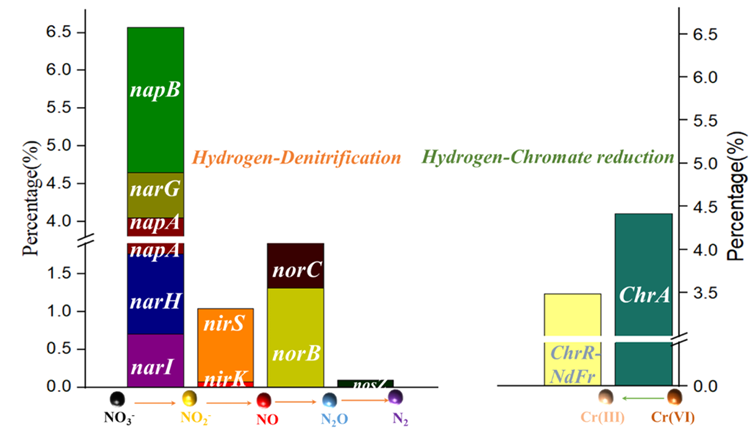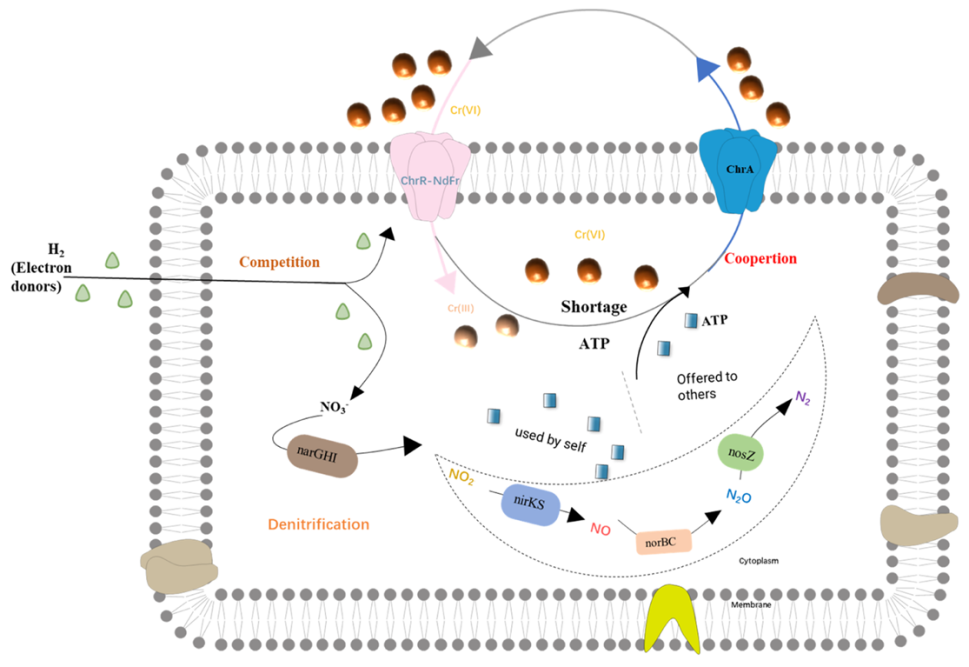Recently, the research team led by Professor Lijie Zhou of the School of the College of Chemistry and Environmental Engineering, Shenzhen University, in partnership with Bruce E. Rittmann, published a paper entitled Cooperation and competition between denitrification and chromate reduction in a hydrogen-based membrane biofilm reactor in Water Research. The team's associate professor Lijie Zhou is the primary author and corresponding author.

During simultaneous reductions of Cr(VI) and NO3- in a H2-based MBfR, the two electron acceptors compete for the common electron donor, H2. The reduction reactions for Cr(VI) and NO3- using H2 as the electron donor have negative ΔG0′values, which means that the respiratory reductions of Cr(VI) and NO3- offer a large energy yield for bacterial synthesis and maintenance. From the thermodynamic point of view, reducing NO3- is more beneficial than reducing Cr(VI), because ΔG0′for reducing NO3- is more negative than for reducing Cr(VI). Hence, NO3- and Cr(VI) reductions can have a competitive interaction, with NO3- reduction usually being more advantageous.
Although competition between NO3- and Cr(VI) reductions is established, beneficial interactions also are possible. For example, Cr(VI) reduction could lower Cr(VI) inhibition to denitrifiers, as well as to Cr(VI) reducers. Another possibility is that some denitrifiers also can reduce Cr(VI), which means that biomass accumulation based on nitrate respiration could increase the biomass available to reduce Cr(VI) in a form of secondary utilization.
To evaluate cooperation and competition for simultaneous reductions of Cr(VI) and NO3-, we operated a continuous-flow H2-MBfR for 55 days with different inputs of Cr(VI) and NO3-: 0.5 mg Cr/L of chromate with 5 mg N/L or 0 mgN/L of nitrate. This study relates the biofilm’s bacterial community and functional genes to the MBfR’s performance for H2-based denitrification and Cr(VI) reduction. The study focused on the balance between cooperation and competition for Cr(VI) and NO3- reductions.

Figure 1 Performance of the Hydrogen-Based Membrane Biofilm Reactor: a) Denitrification Efficiency b) Chromium Removal Efficiency

(a)

(b)
Figure 2 In the H2-MBfR: (a) Variation of Functional Genes and Competition Mechanism, (b) Cooperation Mechanism Diagram
Competition and cooperation between H2-based denitrification and chromate reduction occurred in a H2-based MBfR. The MBfR reduced and removed ~100% of input nitrate and 60% of input chromate when both were present. The better removal of nitrate is consistent with the thermodynamic advantage of denitrification over Cr(VI) reduction and also reflects competition for electrons from H2 oxidation. Elimination of nitrate from the influent ultimately led to a dramatic decline in Cr(VI) reduction and removal, as nitrate-based respiration was needed to sustain the biofilms electron flow and energy generation, which were needed for Cr(VI) reduction. Metagenomics indicated that energy-consuming Cr(VI) export, encoded by ChrA, was dominant over respiratory Cr(VI) reduction via ChrR-NdFr. These mean that Cr(VI) transport significantly depended on the energy generation from H2 oxidation tied to denitrification. At the same time, Cr(VI) transport promoted Cr(VI) reduction by preventing Cr(VI) toxicity from the buildup of Cr(VI) inside the bacteria. Thus, Cr(VI) removal required cooperation among H2-based denitrification, Cr(VI) export, and Cr(VI) reduction, even though NO3- reduction has a competitive advantage over Cr(VI) reduction.
This study was funded by “Guangdong Basic and Applied Basic Research Foundation”, the (Key) Project of Department of Education of Guangdong Province” and “Shenzhen Science and Technology Program”.
See full text link:
https://www.sciencedirect.com/science/article/pii/S0043135424007711
